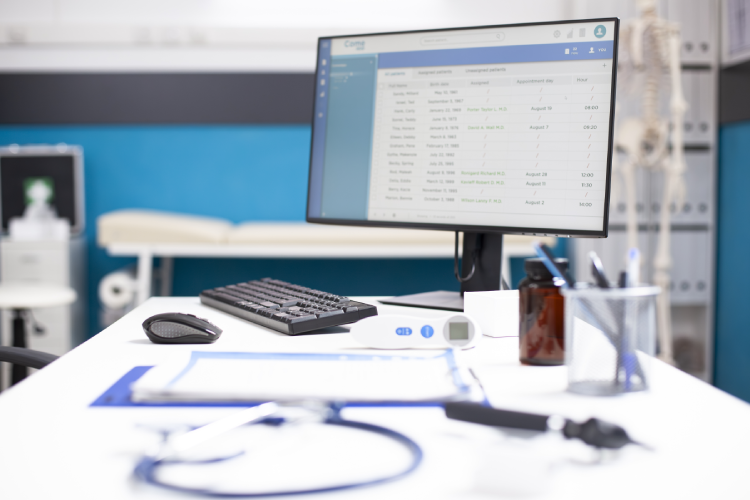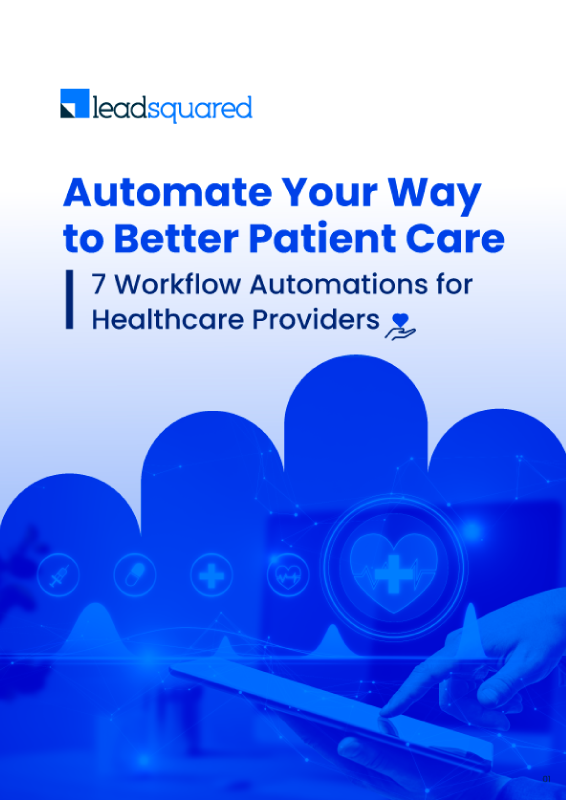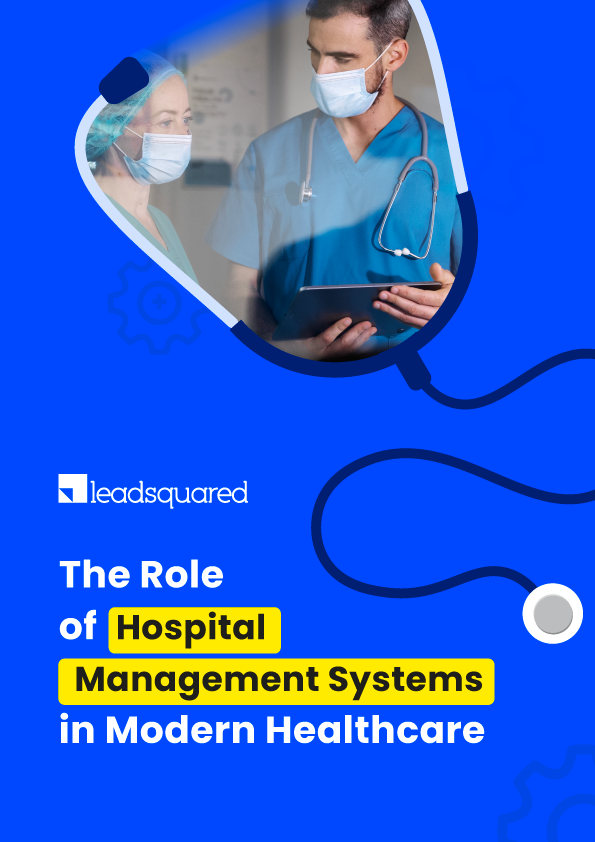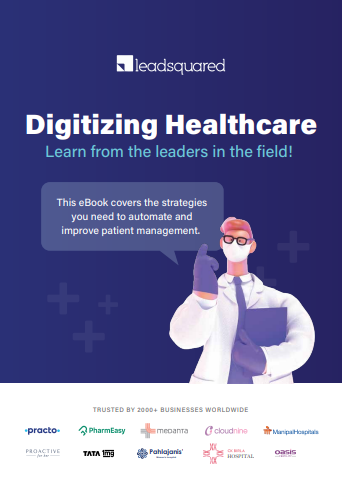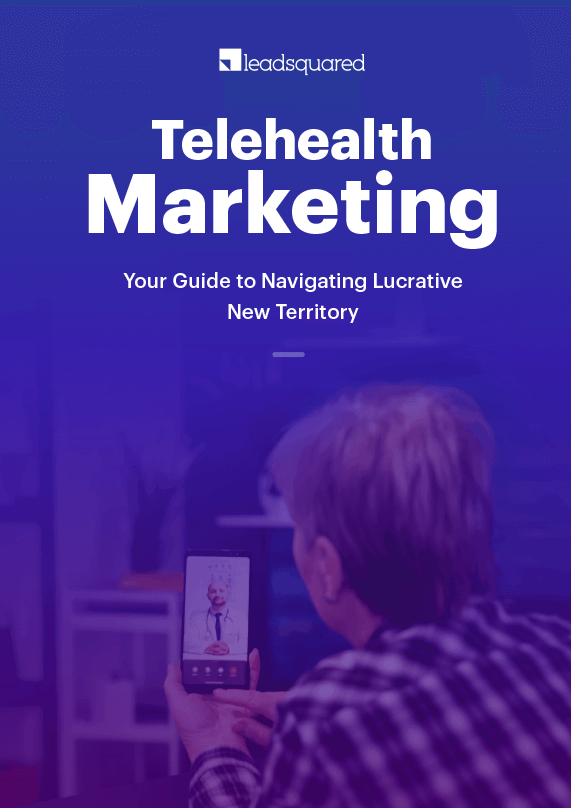Patient management
Healthcare CRM
Transform your practice with LeadSquared. Match patient expectations. Every single time.
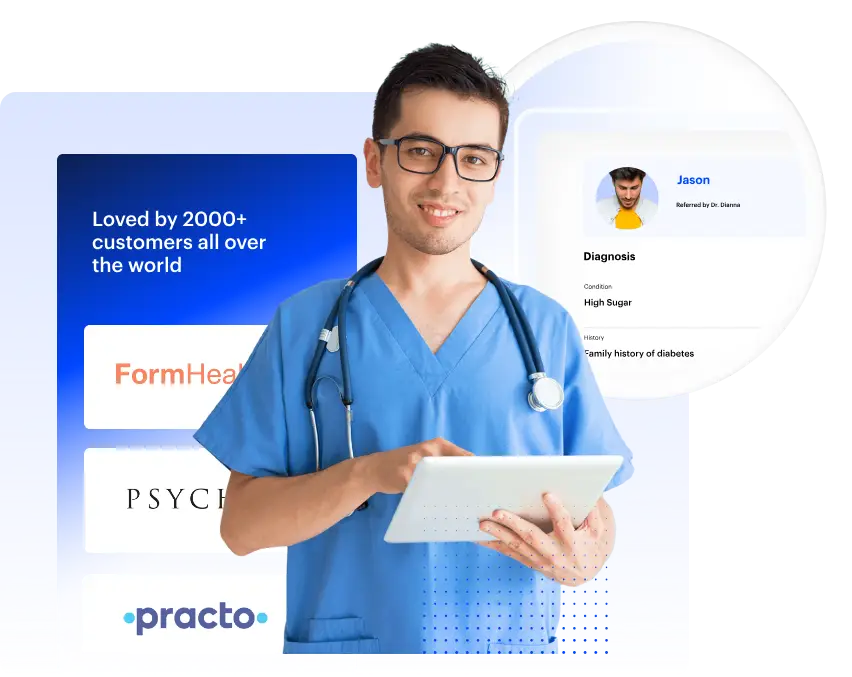
“LeadSquared helped us deploy an effective communication system that improved our conversions by 5X for in-patient leads and 2X for registrations. It is now a key platform we use to manage all our leads.”
5X
Increased in IPD Conversion
Improved
Patient Communication
2X
More Registration
Our team, across various departments, uses LeadSquared for new patient intake. It has helped us decrease patient turnaround time and provides us the visibility that we lacked in our previous system.”
800+
New Leads Generated
Enhanced
Lead Visibility
Reduced
Turnaround Time
Healthcare CRM for All Kinds of Practices – Big or Small
HealthTech companies
Consolidate all inquiries on one platform, solve them faster, and convert more. Streamline communication and improve experience.
Practice 360 – 100% HIPAA Compliant
Manage every single patient experience touchpoint in one place
1. Patient acquisition
Automate and enhance patient acquisition with LeadSquared’s patient acquisition tools. Enable flawless patient experience from the first inquiry.
2. Intake automation
Empower your intake specialists with advanced appointment booking, digital patient intake forms, inquiry handling and more. Reduce wait-times.
3. Appointment booking automation
Easy self-scheduling, automated reminders, glitch-free appointment handling and more. Enhance patient experience with seamless appointment handling.
4. Patient management CRM
HIPAA Compliant Healthcare CRM. Purpose-built to increase patient intake, engagement, and retention. Manage patient relationships with ease and deliver better outcomes.
5. Healthcare marketing automation
Build meaningful and lasting patient relationships through highly personalized communication. Listen, Engage, Educate, Retain.
6. Patient engagement software
An end-to-end patient engagement solution to deliver personalized, timely communications to your patients. Digital, end-to-end and “patient-first.”
7. Mobile CRM for onsite care
Let your care go beyond the desk. Boost on-site caregivers’ efficiency by enabling the entire CRM system on their phones or tablets.
8. Healthcare analytics
Get a bird’s-eye-view of the entire patient acquisition process. Patient acquisition sources, engagement, appointment no-shows, experience rating and more.
9. Physician empanelment
Tools to empanel, engage and retain your best doctors. Build a highly efficient physician onboarding and engagement process.
10. EHR integration
Optimize patient care by integrating your EHR/EMR and other caregiving tools with LeadSquared. Bring patient records and engagement in one place.
11. Security and compliance
By prioritizing security and compliance, our healthcare CRM products help organizations build trust with their patients and maintain regulatory compliance with ease.
12. Patient experience management
Provide exceptional patient experience at every touch-point. Reduce wait times and ensure hassle-free patient interaction every single time
Do More
Integrate with All Your Care Tools
A Front-end Healthcare CRM for All Your Teams
Healthcare CRM Checklist
Checklist to follow while evaluating a Healthcare CRM (as shared by 650 healthcare decision makers)
- Contact history
- Patient health records
- User-friendly
- Integrations
- Referral tracking
- Customization & Flexibility
- Email Marketing
- Custom Reports
- Appointment scheduling
- Appointment history
- Patient forms
- Patient segmentation
- Call center capabilities
- EHR integration
- Cost
- Patient analytics
- Patient Doctor Mapping
- Communication tools
- Billing portal & history
- HIPAA Compliance
- Automation
- Collaboration Tools
- Bulk-texting
- Patient source attribution
- Data Security
- Low-code Capabilities
Check out the complete guidebook to select your healthcare CRM


Endorsed by Some of the Best Healthcare Providers
HIPAA Compliant Healthcare CRM, trusted by hospitals, dental/mental health clinics, diagnostic centers, healthtech companies, and other healthcare providers.
Sterling Accuris Improves Conversions by 25% with LeadSquared 

Sterling Accuris Improves Conversions by 25% with LeadSquared
Discover how one of the fastest growing pathology lab chains partnered with LeadSquared to increase inquiry conversions.
Read Story
Cancer Healer Center Improves Process Efficiency with LeadSquared 

Cancer Healer Center Improves Process Efficiency with LeadSquared
Discover how a top cancer treatment hospital ditched manual processes and boosted efficiency with LeadSquared.
Read Story
CK Birla Increases Patient Conversions by 5X with LeadSquared 

CK Birla Increases Patient Conversions by 5X with LeadSquared
CK Birla Hospitals improved efficiency 3x with LeadSquared, cutting response times by 95% and boosting OPD conversions 2.5x
Read Story
GET IN TOUCH
(+1) 732-385-3546 (US)
080-473-59453 (India)
62-87750-350-446 (ID)
(+971)-553-353-122 (UAE)
Corporate Office Address
LeadSquared 2nd and 3rd Floor, Omega Block, Embassy Tech Square, Kadubeesanahalli, Outer Ring Road, Bengaluru, Karnataka – 560103
© 2025 LeadSquared
















